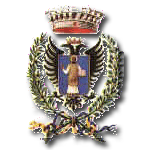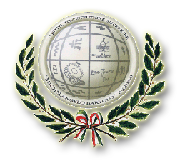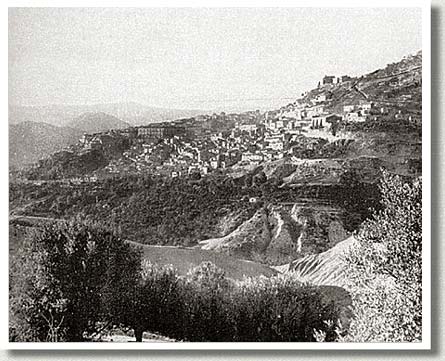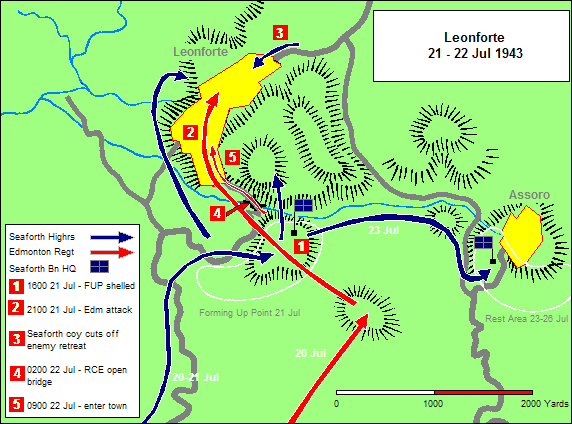
 Translate
Translate
-
* News
- - Agira 2018, 75 years later
- - Agira 2013, 70 years later
- - Gallery of ceremony 2013
- - Operation Husky 2013
- * Students' Contribute
- * About Us
- * Visitor's Book
- * Collaborators
- * Canadian Battles
- * Italian Defensive Positions
- * Allied Forces
- * Historical Movies
- Historical Information
- Historical Maps
- * Bibliography
- Biographies
- * Catania War Cemetery
- * Moro River War Cemetery
- * Syracuse War Cemetery




Leonforte was a Battle Honour granted to two infantry regiments that fought at that town during the Battle of Sicily, a phase of the Italian Campaign during the Second World War.
As The Hastings and Prince Edward Regiment were fighting their difficult action at Assoro, a similar action was fought for the town of Leonforte by the 2nd Canadian Brigade.
 Leonforte was larger than Assoro, with a population of about 20,000 people, and was more modern.
Leonforte was larger than Assoro, with a population of about 20,000 people, and was more modern.
The town, oblong in shape and a kilometre in length, could be entered only along a twisty switchback road which crossed a deep ravine on the southern outskirts of the built-up area. The approach to this bridge (which had been destroyed) was on a reverse curve which gave the enemy on the high ground behind and to the east of Leonforte a clear field of fire.1
The town's co-ordinates are 37°39'0" N 14°24'0" E for those interested in using Google Earth or similar satellite mapping software.
It was now clear that a full scale assault would be needed, and at 1530 on 21 Jul Lieutenant Colonel Bert Hoffmeister called an "O" Group in a farmyard. During the briefing, four shells fired by Canadian artillery landed in the midst of the officers, killing and wounding 30 officers and men. The brigade commander, Brigadier Chris Vokes, ordered the Edmontons to make the attack instead as the Seaforths reorganized. The artillery would be busy that night, as the assault on Assoro also occurred on the night of the 21st. Nonetheless, the barrage was sufficient to cover the Edmonton attack that started at 2130, and all four rifle companies managed to get into the town. In fact, the artillery preparation for the assault was "reported to have been the heaviest that the divisional artillery had yet fired."6 Once inside, however, the gunners were helpless to assist further.7
(The Loyal Edmonton Regiment) soon penetrated into Leonforte but due to the town's size were forced to commit all four of their rifle companies. They eagerly waited for the Engineers to bridge the Dittaino so they could receive urgently needed tank and anti-tank gun support. Alas, they were pre-empted by the enemy who, in what was to become an all too familiar response, launched an armour supported attack near midnight.8
The action deteriorated into house-to-house combat as the unit became split up; in the fog of battle small groups of platoon or section strength fought on independently, each believing itself to be the sole survivor of the larger body."9
Lieutenant Colonel Jim Jefferson of the Edmontons, faced with a sizable force of tanks and self-propelled guns and no artillery support or anti-tank guns, pulled his companies out of the town. His own headquarters, along with most of "C" Company, were unable to withdraw, and he deployed the roughly 100 soldiers left in Leonforte into a U-shaped series of buildings. His tactical HQ was deployed to a wine cellar in the middle of town, just as his radio communications failed.10
In the meantime, a platoon of the 3rd Field Company, RCE went to work to bridge the 50 foot gap over the Dittaino. Work progressed through the night and the bridge was in place by 0430hrs on 22 Jul.
(The engineers) were under constant mortar and machine-gun fire which they later nonchalantly described as being "slightly nigh". While the job was still in progress, their company commander, Major K.J. Southern, moved up the road with a few of the Edmontons to the outskirts of Leonforte, where they were confronted by a machine-gun covering the only approach to the town, and close beside it two enemy tanks and a small force of infantry. Here was a potential threat to the sappers toiling in the ravine below that might well have halted their efforts and spelled disaster for the isolated Edmontons awaiting reinforcement in the town. Catching the Germans by surprise, Major Southern's little party discharged their small arms and made such a display of force that the more formidable enemy group was deterred from advancing. Shortly afterwards the commander of the 90th Canadian Anti-Tank Battery, Major G.A. Welsh, who had come forward with the engineer party, recrossed the ravine under heavy fire to bring two of his six-pounders into action. The machine-gun post and one of the tanks were destroyed, and Welsh kept up the good work by once more approaching the town and with the help of two engineers taking twenty German prisoners.11
The bridging operation marked the first time ever that a Bailey Bridge had been erected under fire.12
A ten-year old boy named Antonio Guiseppe now became important to the conduct of the battle; Lieutenant Colonel Jefferson - out of touch with anyone but the 30 troops in his wine cellar - gave Guiseppe a note, some cash, and an admonition to deliver the message to "any British or Canadian officer." Brigadier Vokes, reportedly despondent that the Edmontons had been apparently destroyed, was elated when Guiseppe managed to transit German lines to be escorted to 2nd Brigade headquarters. A flying column of troops, travelling on four Sherman tanks of the Three Rivers Regiment and including four 6-pounder guns of the 90th Anti-Tank Battery towed by trucks, was assembled under Captain Rowan Coleman of the PPCLI and set off for the town. The first attempt to cross the bridge was turned back at 0645. A second attempt at 0900 was successful, suffering only a single casualty. At 0945 the lead Sherman approached Jefferson's battalion headquarters - at the same time as a German tank rounded a corner; the head to head duel was won by the Canadian.13
Fighting would last for the rest of the day, in Leonforte and in the neighbouring hills where at least one company of the PPCLI also became engaged. By nightfall on 22 Jul, Leonforte was declared secure.
By brilliant manoeuvre and hard fighting, the Canadians had deprived the enemy of two key defensive positions, Assoro and Leonforte. The past three days had cost the division 275 casualties, the highest toll to date (for the 1st Division). Two-thirds of these had been incurred by the Second Brigade at Leonforte.14
-
PPCLI: 21 killed, 40 wounded
-
Seaforth Highlanders: 76 officers and men (including 28 killed)
-
Loyal Edmonton Regiment: 7 killed, 17 wounded, 1 prisoner15
While Assoro had resulted in no decorations, the fighting at Leonforte led to no less than 21 decorations for bravery and leadership.18
-
Private S.J. Cousins of the PPCLI was nominated for the Victoria Cross for actions outside Leonforte on 22 Jul. This was the first such nomination of the Italian Campaign, and one of many unsuccessful VC nominations during the war. Cousins may have been awarded a lesser medal if not for the fact that he was killed not long after the action, and all lesser awards save a Mention in Despatches were not awarded posthumously. He received a well-deserved MiD.
-
Distinguished Service Orders were awarded to Lieutenant Colonel Jefferson of The Loyal Edmonton Regiment, Major Southern of the 3rd Field Company, RCE and Major G.A. "Tiger" Welsh of the 90th Anti-Tank Battery. Major Southern was killed in 1944 as commander of the divisional engineers of the 1st Division.
-
Captain R.C. Coleman, the son of D.C. Colelman, the president of the Canadian Pacific Railway and a company commander with the PPCLI, received a Military Cross.
The following Canadian units were awarded the Battle Honour "Leonforte" for participation in these actions:
 2nd Canadian Brigade
2nd Canadian Brigade
- Princess Patricia's Canadian Light Infantry
- The Loyal Edmonton Regiment
- Stevens, G.R. Princess Patricia's Canadian Light Infantry 1919-1957 Volume 3. (Southam Printing, Montreal, PQ, 1958) p.81
- Dancocks, Daniel G. D-Day Dodgers: The Canadians in Italy 1943-1945 (McClelland & Stewart Inc., Toronto, ON, 1991) ISBN 0771025440 p.68
- Mitcham, Samuel and Friedrich von Stauffenberg The Battle of Sicily: How the Allies Lost Their Chance for Total Victory (Orion Books, New York, NY, 1991) p.192
- Roy, Reginald. The Seaforth Highlanders of Canada 1919-1965 (Evergreen Press, Vancouver, BC, 1969). p.174
- Roy, Ibid, p.176
- Dancocks, Ibid, p.68
- Nicholson, Gerald. Official History of the Canadian Army in the Second World War. Volume II: The Canadians in Italy, 1943-1945 (Queen's Printer, Ottawa, ON, 1957) p.107
- McKay, A. Donald Gaudeamus Igitur "Therefore Rejoice" (Bunker to Bunker Books, Calgary, AB, 2005) ISBN 1894255534 p.57
- Nicholson, Ibid, p.108
- Dancocks, Ibid, p.69
- Nicholson, Ibid, pp.108-109
- Dancocks, Ibid, p.69
- Ibid, p.71
- Ibid, p.72
- Nicholson, Ibid, p.110
- McDougall, Robert L. Narrative of War: From the Beaches of Sicily to the Hitler Line with the Seaforth Highlanders of Canada 1943-1944 (The Goldon Dog Press, Ottawa, ON, 1996) ISBN 0919614612 pp.26-27
- Mitcham and Stauffenberg, Ibid, p.194 - Mitcham cites Hugh Pond's book Sicily (William Kimber, London, UK, 1962)
- Dancocks, Ibid, p.71




